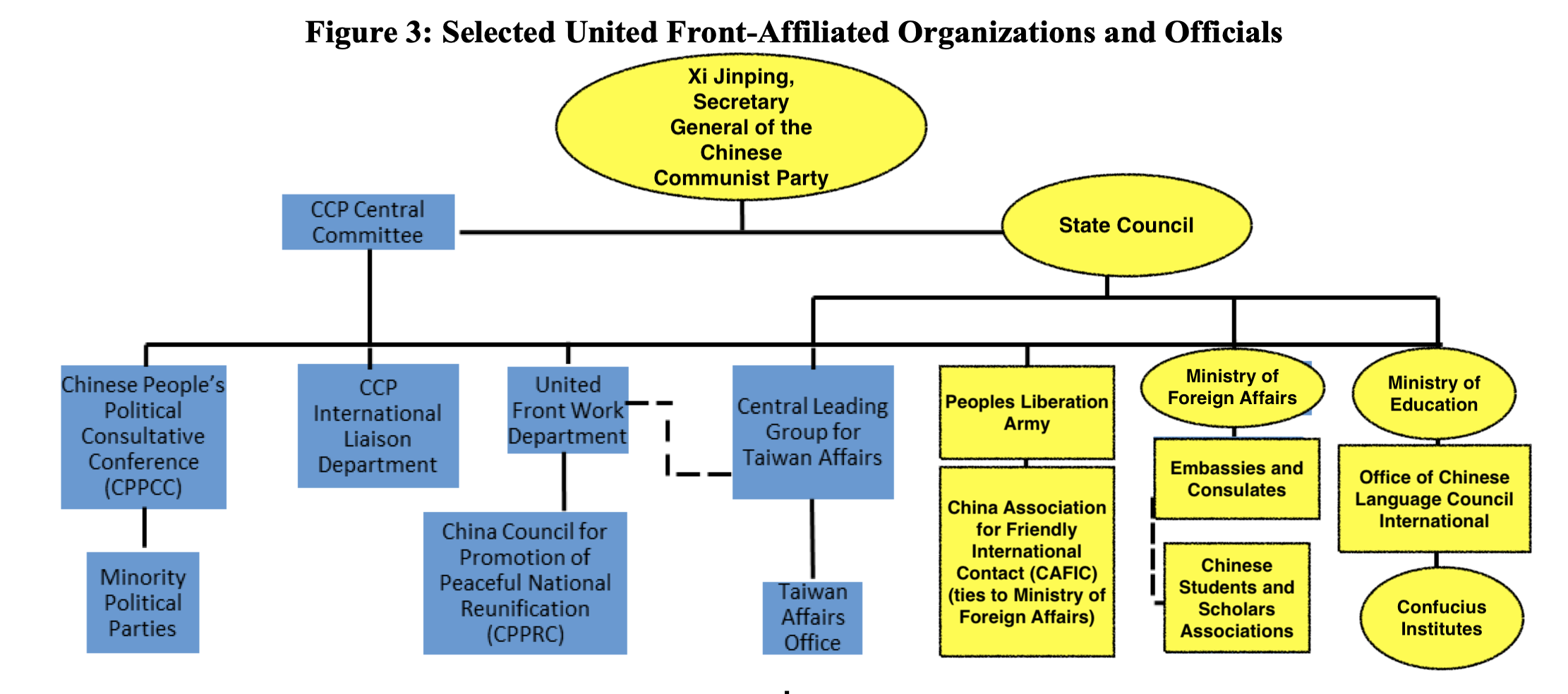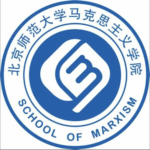
by James C. Sherlock
The College of William and Mary first contracted with the Chinese Ministry of Education’s Confucius Institute (CI) Program in 2012. Despite all of the public warnings about the dangers listed in Part 1, it extended that contract in 2016 and did not cease until 2020, when threatened with sanctions by the federal government.
W&M’s hosting of the Chinese Foreign Ministry’s Chinese Students and Scholars Association (CSSA) continues today.
This is Part 2 of a series that will explore those dangerous alliances and recommend changes in that college’s approach to what the United States considers the biggest foreign threat our nation faces, China.
The creation of the new William and Mary Confucius Institute (WMCI) was unfortunately timed.
In 2012 Xi Jinping took full control of both the Chinese Communist Party and the Peoples Revolutionary Army. The CI’s became part of Xi’s United Front Work Department.
The Worldwide Threat Assessment of the US Intelligence Community in 2012 never saw it coming. The intelligence community, seemingly always fighting the last war, was late to an understanding of the true China threat, at least publicly.
So it would be unfair to criticize William and Mary for not having done so.
But by 2016, when William and Mary signed the renewed contract with Hanban, there were plenty of warnings. See Part 1 for a list. The University of Chicago closed its CI in 2014.
WMCI. WMCI was not an informal arrangement, but a contractual one. The WMCI was under dual governance that gave the Chinese authority over the appointment and firing of the American director of that organization.
The director was Dr. Hanson, whose rosy view of Hanban and the Chinese government we watched on a YouTube video in Part 1.
Here we must note that the College of William and Mary Counsel is appointed by the Attorney General and chartered to review and approve every contract signed by that school. We will look at the WMCI contract and wonder together what lawyer let them sign it.
While the WMCI was belatedly closed under federal government pressure, the relationship with its Chinese partner university, Beijing Normal University, remains. The CSSA is still active.
William and Mary gets a lot of money from those relationships and its Chinese students.
In return for which that institution has surrendered part of its reputation.
From the 2016 contract renewal:
The Board of Directors is formed with members nominated by William & Mary and Beijing Normal University (the Hanban-assigned partner with W&M), and its duties include:
- formulating the rules and procedures of the governance of the Institute;
- formulating development plans for the Institute;
- decision-making on the significant issues including teaching, research and management;
- fund raising;
- advising appropriate authorities at William & Mary on the appointing and dismissing the American director of the Institute;
- examining and approving the budget proposal and final financial accounts of the Institute;
- reporting to the two parties on the management status and significant issues.” [Emphasis added.]
So, Dr. Hanson served as Director at the pleasure of Hanban.
And the College’s counsel, whose job it is, presumably signed off on the contract. Seriously. The Counsel’s office may wish to check and see what other Chinese contracts are in the files. The Attorney General, who appoints the Counsel, may wish to review them as well.
By June of 2014, the American Association of University Professors (AAUP) had caught on. It called on all universities hosting Confucius Institutes to cease doing so.
Confucius Institutes, the AAUP statement said, “function as an arm of the Chinese state” and “advance a state agenda in the recruitment and control of academic staff, the choice of curriculum, and in the restriction of debate.
Xu Lin, the head of Hanban, gave an interview to the BBC in late 2014 in an attempt to counter that criticism. It wasn’t her best idea. She gave a telling reason that she was certain that her teachers were free from political control.
She has that certainty, she says, because all teachers have to write a report at the end of their postings and are questioned on their return about whether they faced politically sensitive questions from students.
To her critics, this may sound less like a neutral monitoring exercise and more like evidence of exactly the kind of political meddling she tries to disprove.
In 2020 Beijing abandoned its Confucius Institute brand. It was only then that William and Mary, facing federal government sanctions, followed suit.
Sort of.
William and Mary, led by Dr. Hanson as Vice Provost, closed its Confucius Institute one day and reopened the next under a new name in the same office with the same Chinese partner university with Dr. Hanson still in charge and the same person with Chinese roots running the day-to-day relationship.
The Annual Threat Assessment of the U.S. Intelligence Community published in February of 2023, under the heading “MALIGN INFLUENCE OPERATIONS” stated the case for reconsideration of the China relationships:
China’s Communist Party (CCP) will continue efforts to achieve President Xi Jinping’s vision of making China the preeminent power in East Asia and a major power on the world stage. As Xi begins his third term as China’s leader, the CCP will work to press Taiwan on unification, undercut U.S. influence, drive wedges between Washington and its partners, and foster some norms that favor its authoritarian system….
Beijing is intensifying efforts to mold U.S. public discourse—particularly by trying to shape U.S. views of sensitive or core sovereignty issues, such as Taiwan, Xinjiang, Tibet, and Hong Kong—and pressure perceived political opponents.
As part of efforts to stifle anti-Beijing criticism, the PRC monitors overseas Chinese students for dissident views, mobilizes Chinese student associations to conduct activities on behalf of Beijing, and influences research by U.S. academics and think tank experts. These activities have included pressuring family members in China, denying or canceling visas, blocking access to China’s archives and resources, and disrupting or withdrawing funding for exchange. [Emphasis added.]
William and Mary’s Hanban/Confucius Institute saga is just the tip of that iceberg.
University of Electronic Science and Technology of China. There is another remarkable — almost unbelievable — fact in this story.
William and Mary’s “sister” university is the University of Electronic Science and Technology of China, which is exactly what it sounds like.
It is perhaps the primary People’s Revolutionary Army’s (PRA) asset under the Ministry of Education.
Beijing Normal University. William and Mary’s continuing post-WMCI China studies and language partner is Beijing Normal University (BNU).
There are lots of universities in China. And lots more in Taiwan.
Indeed W&M uses a university in Taiwan for foreign language training for its ROTC cadets.
DoD presumably would not be amused with paying for a relationship between its cadets and midshipmen and BNU, which is most famous in China for its Marxism and Belt and Road departments.

BNU is also the headquarters of the BRICS (Brazil, Russia, India, China and South Africa) league of higher education and academic cooperation.
But William and Mary was not only unconcerned, it continued its relationship with BNU as its Chinese partner for the transition from its Confucius Institute.
William and Mary executed the transition from WMCI the very next day. With the same people, in the same office, in the same building.
Tsinghua University. William and Mary’s students wishing to study in China have access to that school’s contract with Tsinghua University in Beijing. It is advertised by William and Mary at the link as a Chinese Ivy.
From Wiki:
The current General Secretary of the Chinese Communist Party and paramount leader of China, Xi Jinping, graduated from the school in 1979.
Nothing sells like heritage.
In the next part in this series, we’ll look at the William and Mary Chinese Students and Scholars Association (CSSA) that the Chinese government uses to monitor and control its students at William and Mary.
The W&M CSSA went quiet on Facebook in 2019, like nearly all Virginia CSSA’s, likely by instruction from home. But the organization is active on the William and Mary campus. I have decided to not provide a link to any Chinese student’s online presence to keep them safe.
We’ll try to examine Chinese student recruiting and admissions at William and Mary. To see if they try to sort out the “creative thinkers, principled leaders and compassionate global citizens” among them.
For $67,653 annually each. Per year.
We’ll look at some of the courses they take, and their internships and the applicability of their skills to the People’s Revolutionary Army and Navy.
We’ll also discuss what happens when those “students and scholars” return home.
And we’ll talk more about the money.
And, since President Biden has promised to defend Taiwan, we will wonder what William and Mary and all other Virginia colleges and universities will do with their Chinese students if we go to war with their home country.

Leave a Reply
You must be logged in to post a comment.